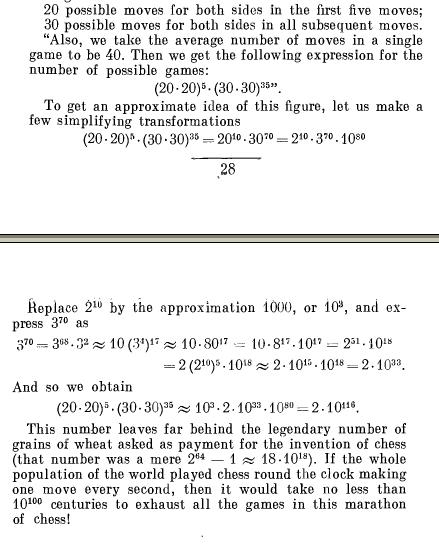This one is a copy paste from teh book.. Algebra can be fun...
Let us make an approximate calculation of the total number of different chess games that can ever be played on a chess board. An exact calculation is quite beyond us, but we will acquaint the reader with a very rough estimate of the total number of possible chess games. The Belgian mathematician M. Kraichik makes the following calculation in his book entitled The Mathematics of Games and Mathematical Diversions.
"In the first move, white has a choice of 20 moves (16 moves for the eight pawns, each of which can move one or two squares and two moves each of the two knights). For each move of white, black can respond with one of the same 20 moves. Combining each move of white with each move of black, we have 20-20 = 400 different games after the first move of each side. "After the first move, the number of possible new moves increases. For example, if white made the first move P-K4, then it has a choice of 29 moves the next time. The number of possible moves continues to increase. For instance the queen alone, standing on Q5 has a choice of 27 moves (on the assumption that all squares that it can move to are vacant). To simplify matters, let us assume the following average numbers:
The text is not clear s.. so the image :P
-
UP 0 DOWN 0 0 0
